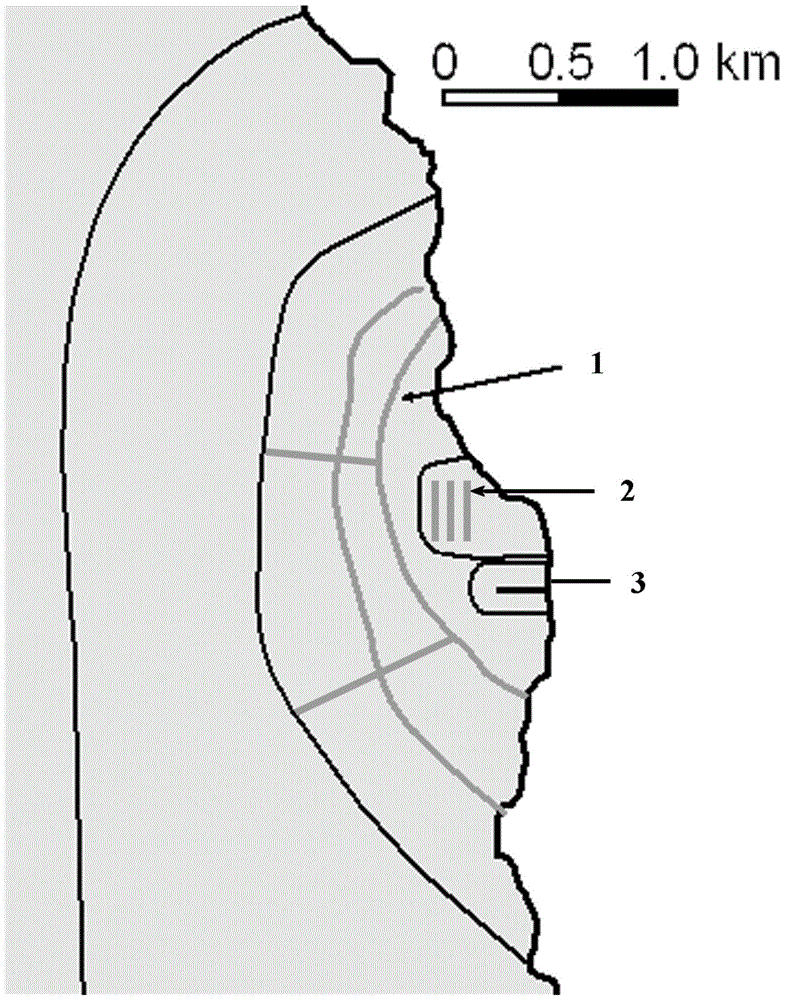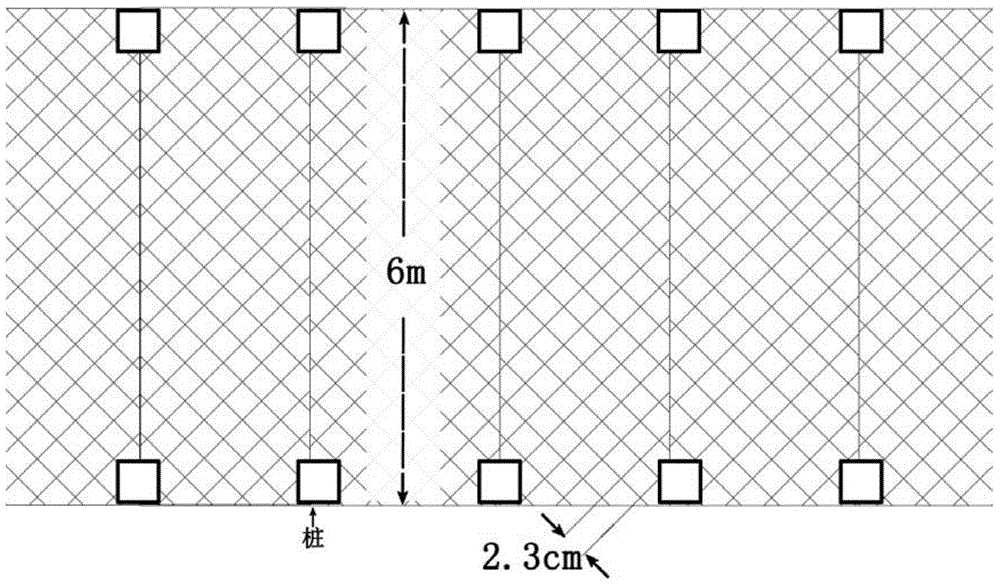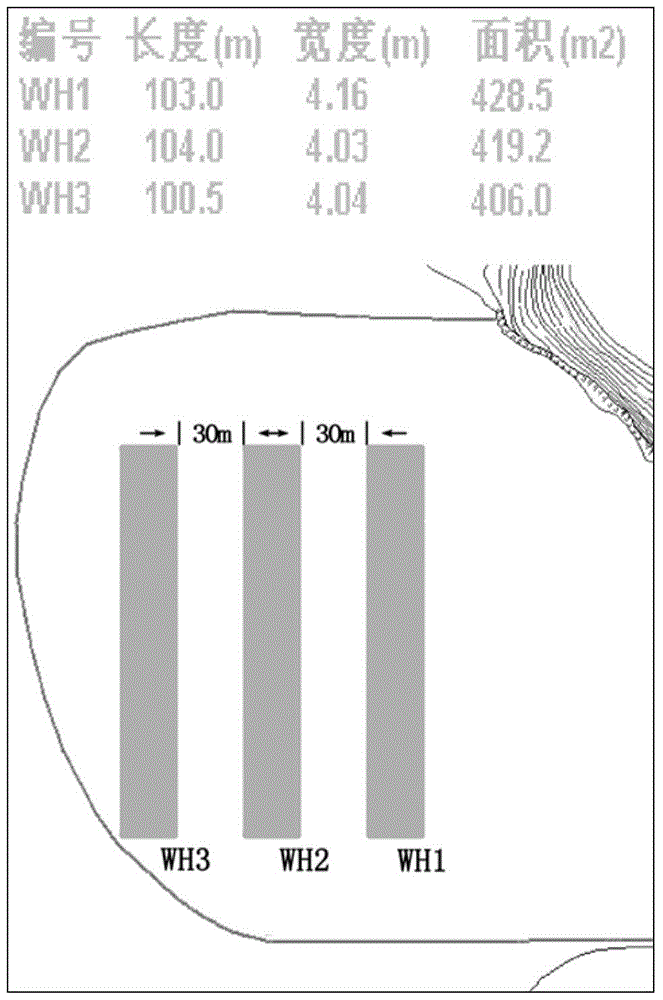A method of purifying water quality by using floating bed of aquatic floating plants
A technology for floating plants and water purification, applied in chemical instruments and methods, sustainable biological treatment, biological water/sewage treatment, etc., can solve problems such as damage and inability to overwinter, reduce accumulation, maintain plant coverage, and purify water quality effect of time
- Summary
- Abstract
- Description
- Claims
- Application Information
AI Technical Summary
Problems solved by technology
Method used
Image
Examples
Embodiment 1
[0034] (1) Analysis of the main environmental factors affecting floating plants
[0035] Wind and waves have a major impact on the growth of floating plants, causing direct mechanical damage. If effective measures are not taken, it will be difficult for plants to grow in the wind and wave area of the lake. Experiments have shown that the introduction of A. philoxeroides into the enclosure, the coverage is 100%, and the cumulative loss reaches 60% in less than a month, which shows that it is not easy to restore floating plants in the stormy area of the lake. This is due to the up-and-down motion of the waves, causing the roots, stems and leaves of floating plants to move relative to each other and damage each other. In the natural state, the amount of damage is much greater than the amount of growth, so it is almost impossible to survive normally. There is no precedent for long-term successful cultivation. Therefore, reducing the impact of wind and waves is a prerequisite ...
Embodiment 2
[0050] Compared with Embodiment 1, the only difference is that in this embodiment, the floating bed with bamboo raft structure has a single length of 8m, and the interval between any two adjacent floating bed belts is 500m. The dominant species of floating plants on the floating bed of bamboo raft structure is Lithium philodendron, and its initial stocking density is 1.2kg / m 2 . The experimental results show that when the wind and waves are strong (wave height 0.57m), the wave penetration rate is 0.54, and the floating bed of floating plants can reduce the suspended solids content in the surface water by 14 mg / L; The content of suspended solids in the surface water decreased by 8 mg / L, and these results were significantly lower than in Example 1. Therefore, the length of the bamboo raft affects its wave-dissipating effect to a certain extent, and increasing the length of the floating bed can improve its wave-dissipating effect; moreover, the interval between the floating bed ...
Embodiment 3
[0052] Compared with Example 1, the difference lies in that the mesh of the net structure floating bed is 1 cm. The dominant species of floating plants is Eclipta philodendron, and its initial stocking density is 1.2kg / m 2 . The monitoring found that the growth of Lithuania philodendron dropped sharply, only half of that when the mesh was 2cm. On-site observations show that Aurantia chinensis is not easy to pass through the mesh, and its growth is greatly restricted. Therefore, too small a mesh is not suitable for the growth of Aurantia chinensis, and the optimal mesh is 2.3cm.
PUM
 Login to View More
Login to View More Abstract
Description
Claims
Application Information
 Login to View More
Login to View More - R&D
- Intellectual Property
- Life Sciences
- Materials
- Tech Scout
- Unparalleled Data Quality
- Higher Quality Content
- 60% Fewer Hallucinations
Browse by: Latest US Patents, China's latest patents, Technical Efficacy Thesaurus, Application Domain, Technology Topic, Popular Technical Reports.
© 2025 PatSnap. All rights reserved.Legal|Privacy policy|Modern Slavery Act Transparency Statement|Sitemap|About US| Contact US: help@patsnap.com



